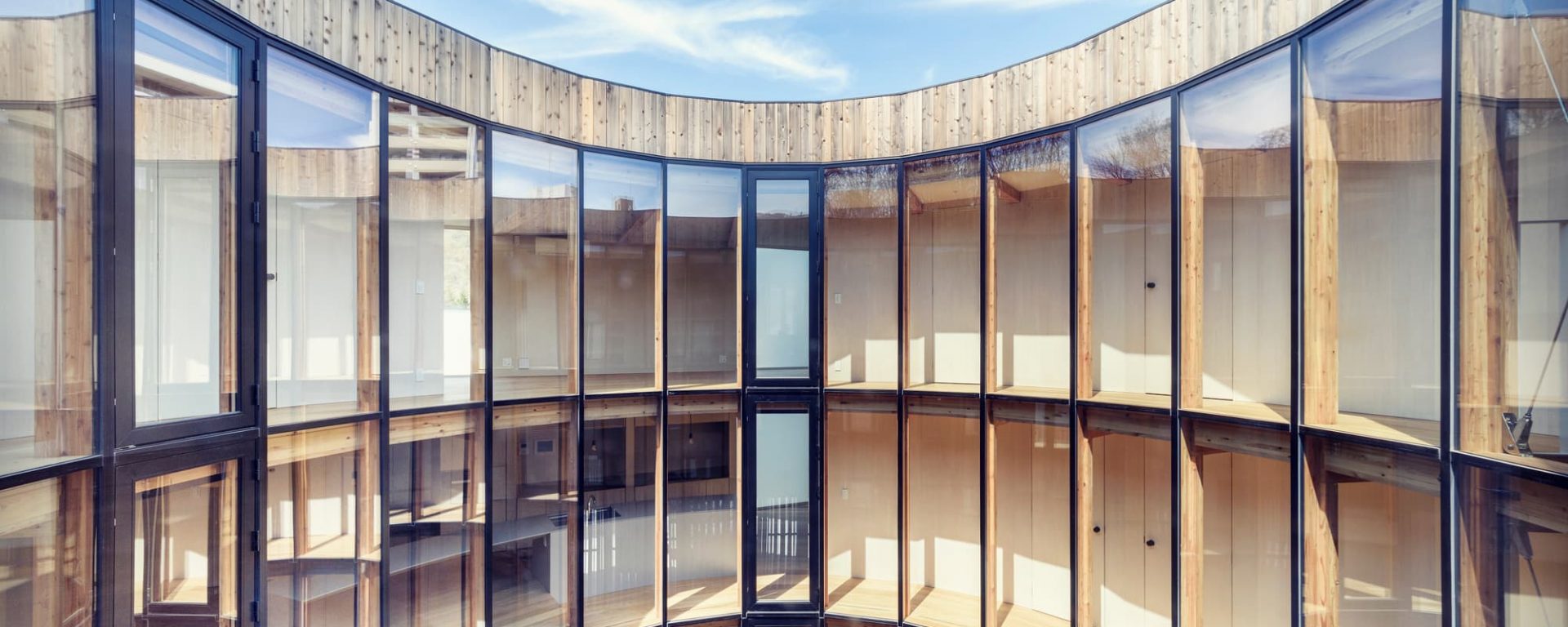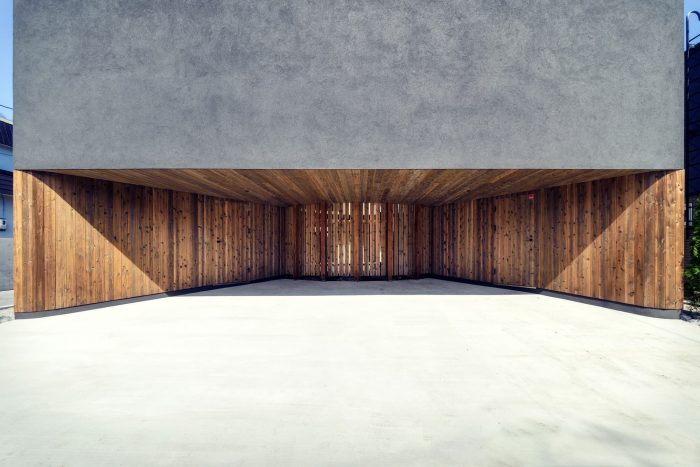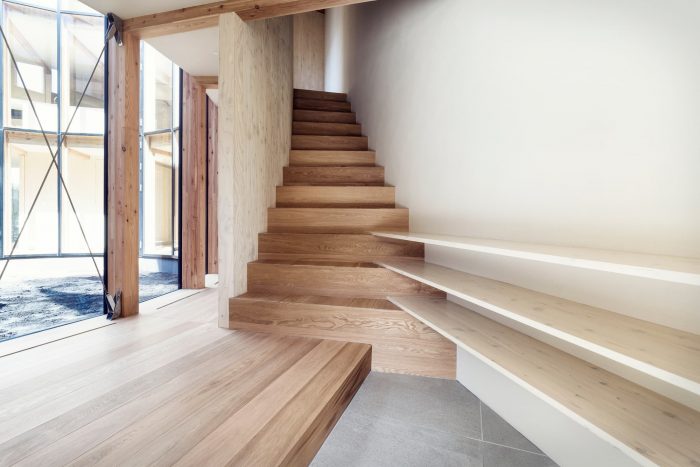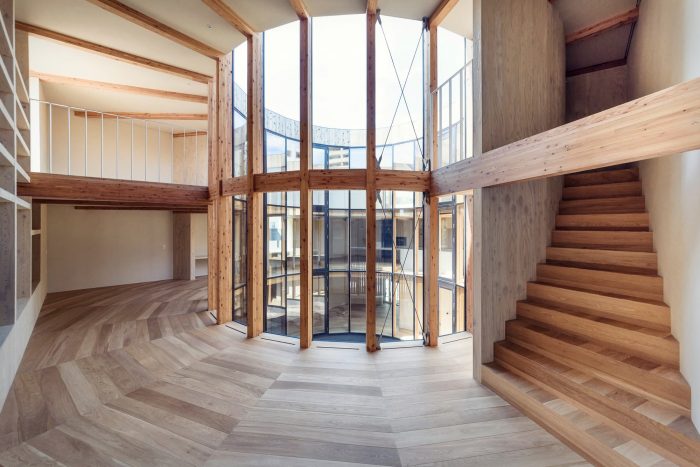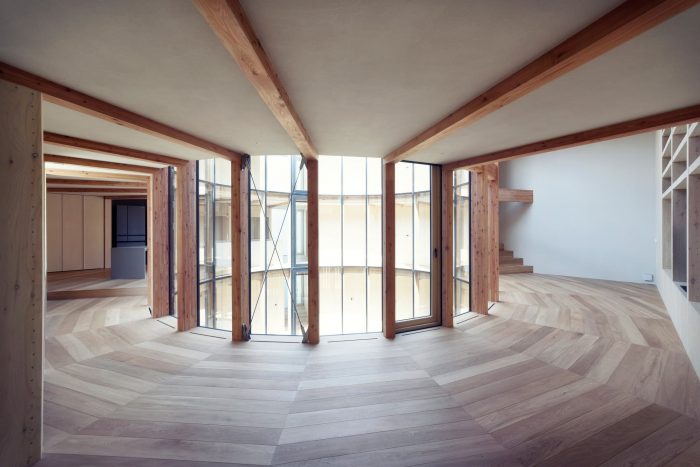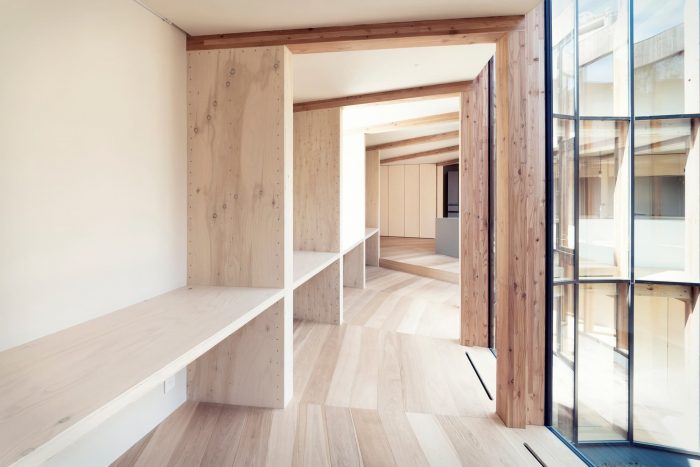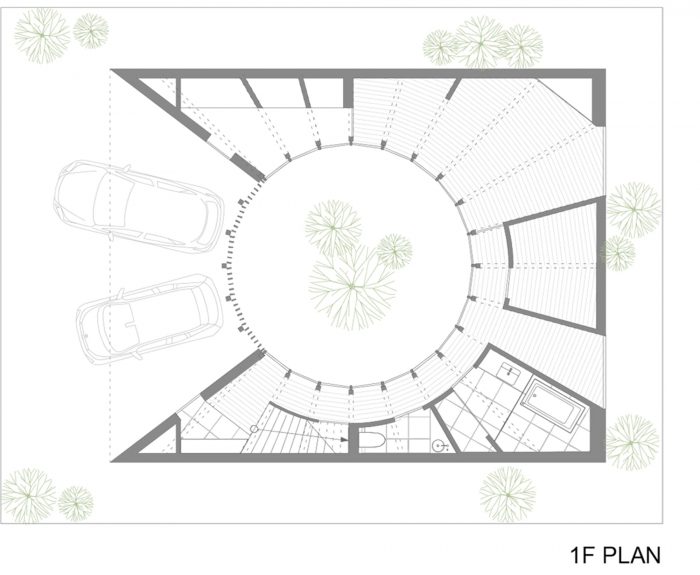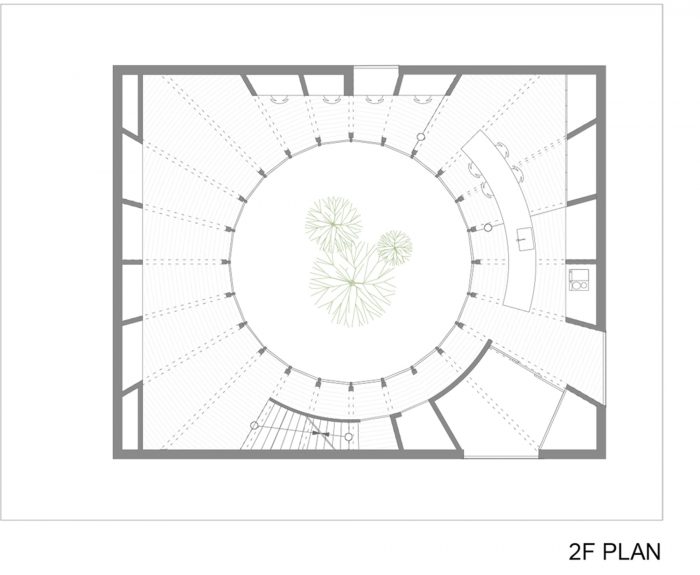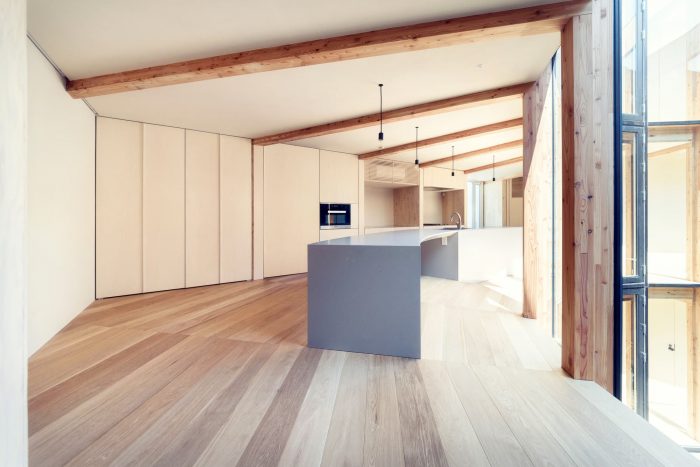360°房屋 “是一座独立的房屋,位于日本北海道札幌市的郊区山上。该住宅是围绕一个圆形的庭院设计的,木材结构向外辐射到建筑内部。室内空间朝向庭院,并遵循可见的木梁所设定的辐射线。房间的布局由环绕庭院的环形通道决定,给居住者一个不断变化的视角来观察庭院和它周围的室内空间。因此,居住者可以把庭院看作是一个建筑时钟;在白天动态地照亮建筑的不同部分,并在四季中不断变化。
The ‘360° House’ is a freestanding house located in the outskirt hills of Sapporo on the island of Hokkaido, Japan. The residence is designed around a circular courtyard with timber construction radiating outward into the interior of the building. The interior spaces are oriented towards the courtyard and follow the radial lines set out by the visible timber beams. The layout of the rooms is determined by a circular path of access wrapping around the courtyard, giving the dweller an ever-changing perspective of the courtyard and the interiors surrounding it. Hence, the dweller might see the courtyard function as an architectural clock; dynamically lighting up different parts of the building during the day and continually changing during the seasons.
除了光线之外,庭院还为居住者提供了更多的自然景观。由于札幌位于日本的最北端,每年都面临着严冬和大雪。圆形庭院将天气引入生活空间,同时让居住者保持温暖和舒适,暂时创造出生活在雪球里的效果。卧室是少数几个不朝向院子的房间,而是朝向住宅周围的森林山丘。这为居住者提供了一些风景,并将建筑固定在其周围环境中。通过分离这个空间,建筑创造了几个层次的隐私,为居民提供了一个远离庭院周围的视觉连接空间的私人退路。
Apart from light, the courtyard provides the dweller with more natural spectacles. As Sapporo is in the very northernmost region of Japan it faces bitter winters and heavy snowfall on a yearly basis. The circular courtyard invites the weather into the living space whilst keeping the dwellers warm and comfortable, temporarily creating the effect of living inside a snow globe. The bedrooms are some of the few rooms not oriented towards the courtyard but rather towards the forested hills surrounding the residence. This offers the dwellers some scenic views and anchors the building in its surroundings. By separating this space, the architecture creates several levels of privacy and offers the residents a private retreat from the visually connected spaces surrounding the courtyard.
木质结构将空间连接在一起,其放射状结构是整个建筑的重复性建筑动机。梁柱以15°的间隔辐射到圆形庭院周围,并与建筑外围的家具融为一体。这种设计使大部分的内墙和家具具有结构性,将木质框架作为一种美学元素以及建筑的功能和结构元素进行整合。除了应对这些几何上的挑战,内部的桁架结构还跨越了前面的停车区,同时完全符合最新的抗震建筑标准。
The timber construction bonds the spaces together with its radial structure as a repeating architectural motive throughout the building. The beams radiate from the columns set at 15° intervals around the circular courtyard and integrate into the building’s furniture on the outer perimeter of the building. This design gives structural properties to most of the interior walls and furniture, integrating the timber frame as both an esthetic element as well as a functional and structural element of the architecture. Apart from coping with these geometric challenges, the internal truss structure also traverses a large span over the front parking area whilst concurrently being fully compliant with the latest earthquake-proof construction standards.
建筑材料和饰面都主要是在当地生产和提取的,展示了北海道最新的可持续建筑方法。室内利用木质结构的自然温暖,与外面寒冷的雪地形成对比,而粉刷过的木质饰面和传统的灰泥工程提供了一种轻盈的感觉。尽管每个房间都有大面积的玻璃,但这为整个建筑创造了一种亲切的氛围。天然和当地材料的利用与完全集成的气候解决方案相结合,保证了该建筑的高效能源性能和可持续的碳足迹。此外,供暖、空调和排水系统都是完全不可见的,这给建筑带来了一种整洁的美感。总而言之,”360°房屋 “为居民提供了一个独特的栖息地,并使他们有机会在中央庭院周围发展家庭。
Both the construction materials and finishes are predominantly locally manufactured and extracted showcasing the latest sustainable building methods from Hokkaido. The interior creates a contrast with the cold snowy outside by using the natural warmth of the wood-clad interior whilst a whitewashed wood finish and traditional plasterwork offers a sense of lightness. This creates an intimate atmosphere throughout the building despite the large glass surface that borders every room. The utilization of natural and local materials in combination with a fully integrated climate solution guarantees the building’s efficient energy performance and a sustainable carbon footprint. On top of that, both the heating, air-conditioning, and drainage systems are completely invisible giving the building an uncluttered esthetic. All in all the ‘360° House’ offers the residents a unique habitat and the opportunity to grow their family around the central courtyard.
Architects: YUUA Architects & Associates
Area : 278 m²
Year : 2020
Photographs :SOBAJIMA Toshihiro
Lead Architects : Aihara Madoka, Bas Spaanderman
City : Sapporo
Country : Japan

